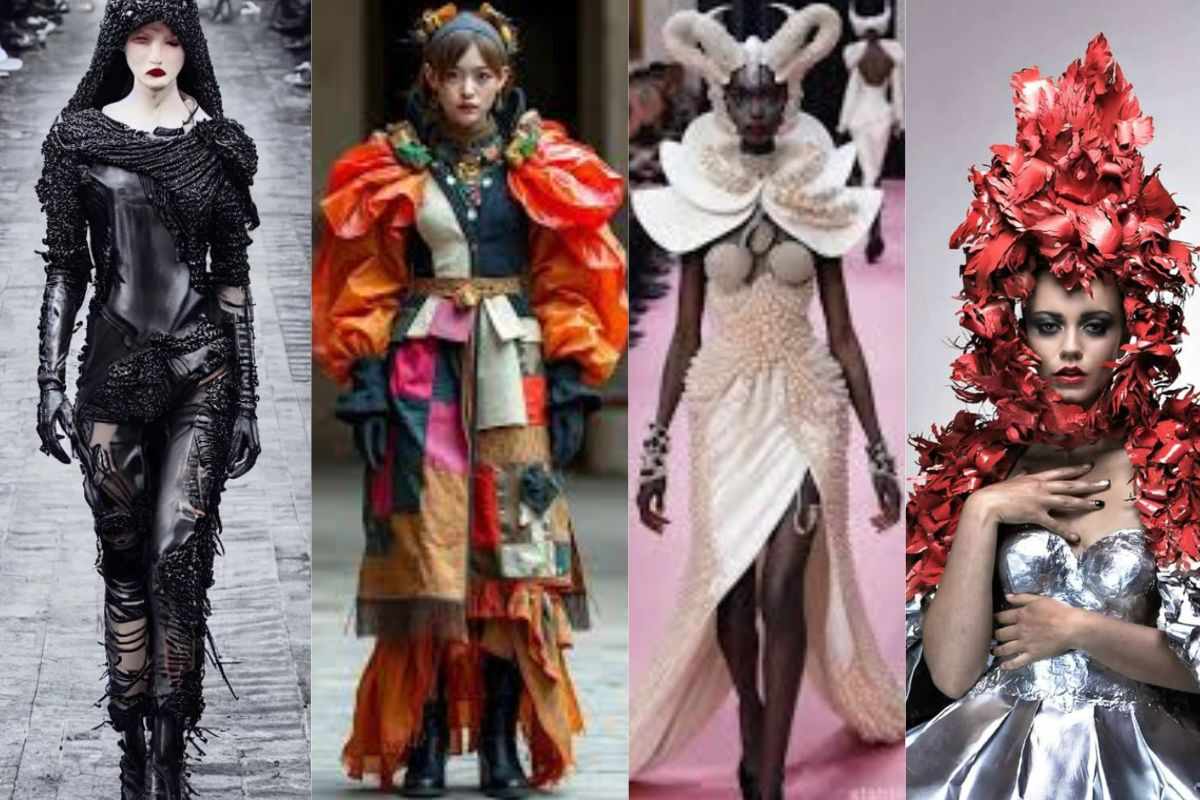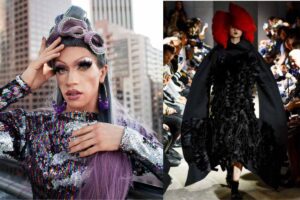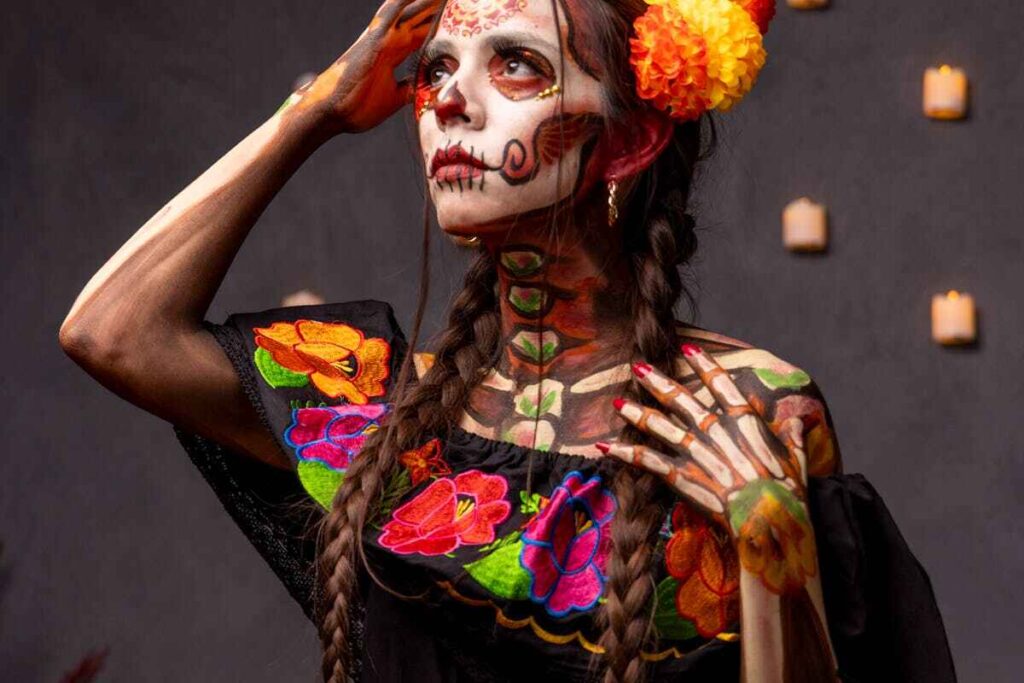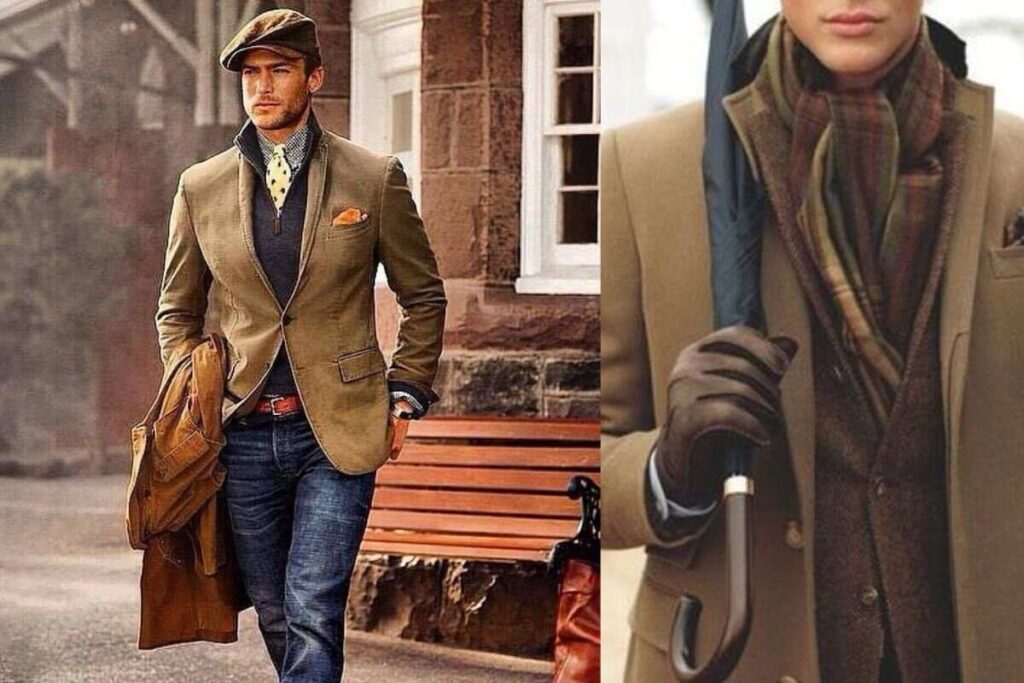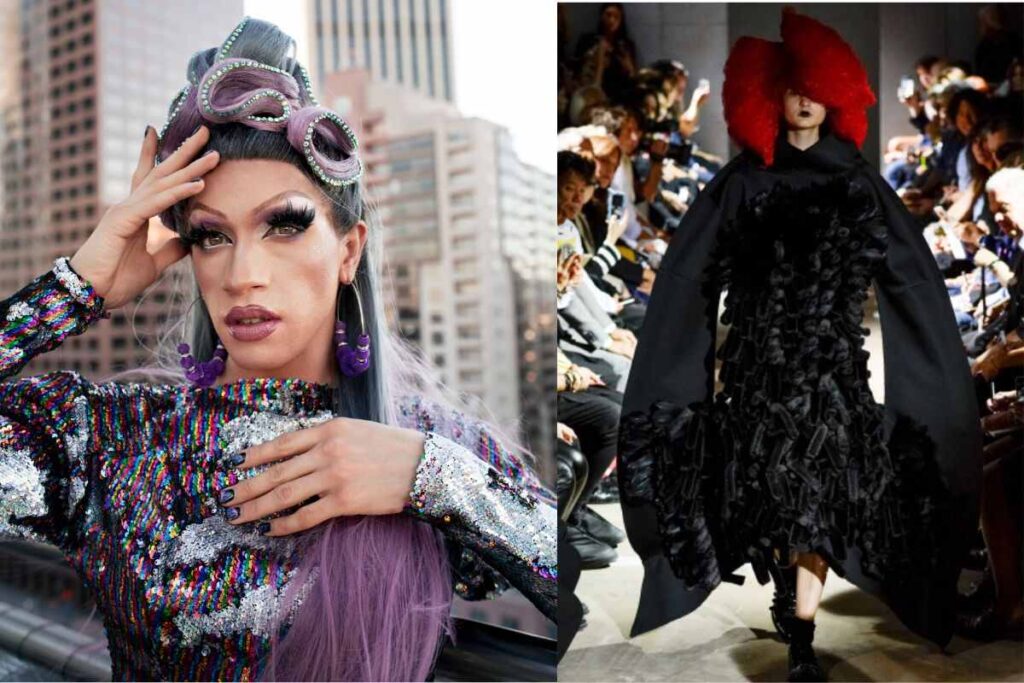Fashion has always been an expressive medium to showcase individuality, culture, and creativity. For those who crave something beyond the mainstream, avant garde fashion offers a bold, artistic path. It challenges the norms, breaks boundaries, and embraces the unconventional. This article explores the rich world of avant garde fashion. It provides insights on incorporating its principles into your style while diving into its history, philosophy, and influence on today’s fashion landscape.
What is Avant Garde Fashion?
Avant garde fashion refers to clothing and accessories that push the boundaries of traditional design. It is experimental, innovative, and often unconventional. In French, “avant garde” translates to “advance guard” or “vanguard,” symbolizing its forward-thinking nature. It isn’t simply about following trends—it’s about breaking them. Avant garde fashion often challenges societal norms and expectations, presenting designs that may feel futuristic, abstract, or provocative. Designers in this realm are less concerned with wearability and more focused on the art of fashion as a form of expression.
The Philosophy Behind Avant Garde
At its core, avant garde fashion is a statement of rebellion. It represents a desire to deconstruct the rules and reconstruct new ones. This approach speaks to a larger philosophy of challenging the status quo—whether through asymmetry, unexpected textures, or garments that change how we perceive the human form. Avant garde fashion often carries deeper themes like cultural critique, existentialism, or sustainability, reflecting a desire to engage with larger societal issues beyond mere aesthetics.
Historical Evolution
Avant garde fashion, once confined to the high fashion runways and art exhibitions, has slowly permeated streetwear and everyday fashion. It dates back to movements like Futurism and Dadaism in the early 20th century, where art, culture, and fashion collided. Designers like Elsa Schiaparelli pioneered this style in the 1930s, merging surrealism with couture. Fast forward to the 21st century, the avant garde has evolved to include luxury fashion houses and independent designers using digital platforms to bring this once-exclusive style to the masses.
Key Elements of Avant Garde Fashion
Deconstruction and Reconstruction
A defining feature of avant garde fashion is its approach to garment construction. Deconstruction, a method where designers remove conventional garments and reassemble them in new ways, creates pieces that challenge traditional silhouettes. This technique redefines what clothing should look like, focusing on raw edges, exposed seams, and irregular shapes, creating a look that is both unfinished and avant garde.
Asymmetry and Unconventional Silhouettes
Asymmetry is a hallmark of avant garde design. Forget the balanced proportions of traditional fashion; here, one side may tower higher than the other, or layers might pile unexpectedly. Avant garde silhouettes often play with proportion—oversized shoulders, exaggerated lengths, or disproportionate pieces. These designs challenge the notion of symmetry, inviting wearers to embrace unpredictability.
Bold Textures and Fabrics
Textures in avant garde fashion often defy what’s considered “comfortable.” Think stiff, structured materials, shiny metallic fabrics, or innovative uses of plastic and neoprene. The unfamiliarity of these materials creates visual and tactile intrigue, pushing the boundary between fashion and sculpture. Avant garde designers aren’t afraid to experiment with unconventional fabrics that evoke curiosity and provoke thought.
Neutral and Monochromatic Palettes
Though avant garde fashion may seem extravagant, many designers opt for neutral and monochromatic palettes—black, white, and shades of gray. These muted tones focus on form, texture, and silhouette rather than vibrant hues. The result? A minimalist yet impactful style that proves a bold statement doesn’t always need bright colors.
Famous Avant Garde Designers & Their Influence
Rei Kawakubo
Rei Kawakubo, the visionary behind Comme des Garçons, is an avant garde master. Kawakubo is well-known for creating cognitively stimulating designs that blur the boundaries between fashion and art. Her collections frequently feature asymmetry, deconstruction, and an exploration of the human form that questions conventional beauty standards.
Yohji Yamamoto
Yohji Yamamoto’s contribution to avant garde fashion lies in his impeccable minimalism. His designs are often monochromatic and oversized, emphasizing subtle textures and innovative tailoring. Yamamoto’s pieces balance simplicity with complexity, creating timeless garments that challenge our understanding of minimalism.
Iris van Herpen
Iris van Herpen has revolutionized the world of haute couture with her unique blend of fashion and technology. Using 3D printing and innovative materials, van Herpen creates futuristic and ethereal garments. Her designs are visually stunning and redefine how we think about the intersection of fashion and technology.
Maison Margiela
Maison Margiela is well known for its innovative fashion philosophy that embraces Imperfection. The brand’s designs often include unfinished hems, inside-out seams, and unconventional use of materials. Margiela’s philosophy is deeply rooted in the belief that fashion should celebrate the raw and the real, turning imperfections into works of art.
Avant Garde Accessories
Sculptural Footwear
Avant garde fashion isn’t limited to clothing—accessories play a pivotal role, too. Sculptural footwear is a prime example, with exaggerated heels, bold shapes, and unconventional designs that turn shoes into wearable art. These pieces redefine what it means to “walk in style,” blending form with function in surprising ways.
Experimental Headwear
Headwear in avant garde fashion ranges from oversized hats to geometric, architectural pieces that serve as wearable sculptures. These accessories complete a look, adding an unexpected, bold statement that complements avant garde ensembles.
Statement Jewelry
Avant garde jewelry often breaks the mold of traditional fine jewelry. Designers create oversized, geometric, and abstract pieces that transform an outfit. Necklaces, earrings, and bracelets are no longer just accessories—they are focal points that enhance the artistic expression of an ensemble.
How to Incorporate Avant Garde Elements Into Your Wardrobe?
- Start Small: Incorporating avant garde elements into your wardrobe doesn’t require a complete overhaul. Start with bold accessories—think asymmetrical earrings or sculptural footwear—to introduce avant garde into your daily outfits.
- Building Confidence: Avant garde fashion is about self-expression, so wearing these bold pieces requires confidence. Over time, as you embrace the uniqueness of avant garde, you’ll find that confidence grows, and your style will reflect your personality more authentically.
- Layering and Textures: Layering is a key component of avant garde fashion. Combining different textures, such as pairing smooth leather with a rough wool coat, creates depth and complexity in your outfit. Don’t be afraid to mix and match—avant garde fashion thrives on unexpected combinations.
- Play with Proportions: One of the most exciting aspects of avant garde fashion is playing with proportions. Oversized coats, voluminous trousers, and cropped tops can be combined to create a visually striking look that feels fresh and sophisticated.
- Curating a Capsule Wardrobe with Avant Garde Staples: Creating a capsule wardrobe incorporating avant garde staples is a great way to simplify your style while maintaining a unique edge. Focus on versatile pieces like asymmetric jackets, monochromatic dresses, and bold accessories that can be mixed and matched for different looks.
Self-Expression Through Avant Garde Fashion
Avant garde fashion is all about breaking the rules. Whether it’s wearing unconventional colors, fabrics, or cuts, embracing the unexpected sets avant garde fashion apart. There’s no right or wrong—only your interpretation of style. In a world where trends often dictate how we dress, avant garde fashion allows you to stand out. It reflects your individuality, making each outfit a personal statement. Your clothes can tell a story, reflecting your mood, thoughts, and perspectives. Avant garde fashion often intersects with art and culture. This style reflects a deep connection between creative disciplines, from collaborations with visual artists to designs inspired by architecture or performance art, making it a holistic expression of personal and cultural identity.
Sustainability in Avant Garde Fashion
- Slow Fashion Movement: Sustainability is increasingly important in fashion, and avant garde designers lead the charge. By embracing slow fashion principles, they create timeless pieces meant to last, using high-quality materials and craftsmanship that stand the test of time.
- Upcycling and Reimagining Old Garments: Upcycling is common in avant garde fashion, where old or discarded garments are reimagined into new, innovative designs. It reduces waste and aligns with the avant garde philosophy of deconstruction and reconstruction.
- The Future of Sustainable Avant Garde Fashion: As the fashion industry continues to evolve, the future of avant garde fashion will likely see even more emphasis on sustainability. Designers are exploring new materials, such as biodegradable fabrics and recycled plastics, ensuring that avant garde fashion remains innovative and environmentally conscious.
Avant Garde Fashion for All Genders and Body Types
Breaking Gender Norms
Avant garde fashion is a powerful vehicle for challenging traditional gender norms. Androgyny is a cornerstone of this movement, where garments are neither distinctly masculine nor feminine but exist in a fluid space that rejects binary distinctions. Designers like Yohji Yamamoto, Ann Demeulemeester, and Rick Owens have long-pushed androgynous silhouettes, blending tailored jackets with oversized, unisex trousers or soft, flowing tunics that are equally wearable by any gender. Rather than adhering to gender-specific cuts, the emphasis is on form, structure, and innovation. This open-ended approach to design allows wearers to redefine what clothing means to them personally, offering liberation from restrictive fashion binaries.
Celebrating All Shapes
In avant garde fashion, body inclusivity is more than just a trend—it celebrates diversity. Avant garde defies the beauty standards often upheld by mainstream fashion, welcoming all body shapes and sizes. Unlike traditional fashion, which can be rigid in its sizing and form, avant garde is more forgiving, with many designs relying on oversized cuts, asymmetry, and layering. This style prioritizes the artistry of the garment over how it clings to a specific body type. For instance, flowing fabrics and architectural shapes work beautifully on slender and fuller figures, proving that avant garde can be for everyone.
Personalizing Avant Garde for Different Body Types
While avant garde clothing is known for its oversized and experimental nature, it’s important to tailor this unique style to suit your body shape. For taller individuals, voluminous pieces can create an elegant silhouette, while shorter frames might choose structured pieces that elongate the body. Playing with proportions—such as pairing a fitted top with an exaggerated, wide-leg pant—allows for a balance that flatters the individual. Customization is key in avant garde fashion; the idea is not to conform to a pre-set ideal but to make the avant garde look work in harmony with your unique shape, allowing your personality to shine through.
Styling Avant Garde for Everyday Wear
Balancing Avant Garde with Practicality
While avant garde fashion is often viewed as art, it doesn’t have to be impractical for everyday wear. A subtle integration of avant garde elements can add intrigue to your daily outfits without compromising functionality. Start with a standout piece, such as an asymmetrical dress or large jacket, then accessorize it with more basic pieces. It allows the avant garde element to stand out while still being wearable. Layering is also essential—think structured coats over minimalist turtlenecks or architectural skirts with sleek ankle boots. The key is to find balance—merging avant garde’s boldness with the ease required for daily life.
Minimalist Avant Garde
For those who want to embrace avant garde fashion without the overt theatrics, minimalist avant garde provides a refined approach. Designers such as Issey Miyake and Jil Sander excel at creating simple pieces in their color palette but complex in their form. Neutral tones—like blacks, whites, and greys—are hallmarks of minimalist avant garde, allowing the focus to remain on the structure and craftsmanship of the garment. Subtle asymmetry, unexpected cuts, and high-quality fabrics create a striking yet understated look. It’s a perfect entry point for anyone looking to ease into avant garde fashion while maintaining a sophisticated and wearable style.
How to Transition from Day to Night with Avant Garde Looks?
One of the beauties of avant garde fashion is its versatility. Playing with layering and accessories allows you to transition an avant garde outfit from day to night easily. For daytime, opt for more relaxed, comfortable pieces—like a loose, draped dress paired with minimal jewelry and flat shoes. As you move into the evening, swap out casual elements for statement accessories, like bold, sculptural jewelry or an avant garde headpiece. Adding a structured coat or switching to striking, angular heels can instantly elevate your look from casual to avant garde chic, perfect for a gallery opening or night out.
Avant Garde Fashion in Pop Culture
Music and Avant Garde
Music has always been a fertile ground for avant garde fashion, with many artists using their stage presence to challenge norms. Icons like David Bowie, Grace Jones, and Björk have all made avant garde a part of their visual identity. Bowie’s androgynous styles, Jones’ bold, futuristic ensembles, and Björk’s ethereal, otherworldly costumes are just a few examples of how musicians use avant garde fashion to amplify their creative personas. In contemporary music, artists like Lady Gaga and FKA Twigs continue to push these boundaries, using fashion as a form of performance art, making it clear that avant garde is as much about spectacle as it is about clothing.
Avant Garde Fashion in Film
The film has long served as a platform for avant garde fashion, where costume design plays a crucial role in storytelling. Movies like Blade Runner, with its futuristic dystopian style, or The Fifth Element, featuring Jean-Paul Gaultier’s iconic sci-fi costumes, are perfect examples of avant garde fashion shaping cinematic narratives. The avant garde design has become ingrained in popular culture because of these movies and others like The Hunger Games, where the actors’ flamboyant, exaggerated attire represents strength and rebellion.
Celebrity Influences
Avant garde fashion often finds its way onto the red carpet, where celebrities use the opportunity to make bold, artistic statements. Stars like Tilda Swinton, Rihanna, and Billy Porter have all embraced avant garde designs at high-profile events, using the red carpet as a stage to showcase pieces that challenge traditional glamour. Rihanna’s 2015 Met Gala gown, designed by Guo Pei, is a prime example—a golden, voluminous cape that became an instant fashion icon. These moments highlight how avant garde fashion isn’t just for the runway; it’s a tool for celebrities to assert their individuality and creativity in the public eye.
Challenges and Criticism in Avant Garde Fashion
One of the criticisms faced by avant garde fashion is its commercialization. As avant garde designs become more accessible to the masses, some argue that they lose their rebellious edge. Brands may adopt avant garde aesthetics to capitalize on trends without embracing the philosophy behind the movement, leading to watered-down versions of the original. It raises the question: can something still be considered avant garde if it becomes mainstream? The tension between staying true to avant garde roots and appealing to a broader audience remains challenging for designers who want to innovate without compromising their artistic integrity. Another common criticism of avant garde fashion is its wearability—or lack thereof. Avant garde designs are often seen as more art than clothing, leading some to question their practicality. While this can be seen as a negative, it also makes avant garde fashion unique. It pushes the boundaries of what fashion can be, challenging the notion that clothing must be functional to be valuable. For those who view fashion as an extension of personal expression, avant garde offers a canvas that allows them to explore new ideas, even if they aren’t always comfortable or easy to wear.
Conclusion
Avant garde fashion is a celebration of individuality, creativity, and innovation. Whether you’re ready to embrace the avant-garde fully or want to incorporate a few elements into your wardrobe, this style encourages self-expression and challenges the status quo. Fashion should be fun, bold, and reflect who you are—and avant garde offers the perfect avenue to explore your unique style.

